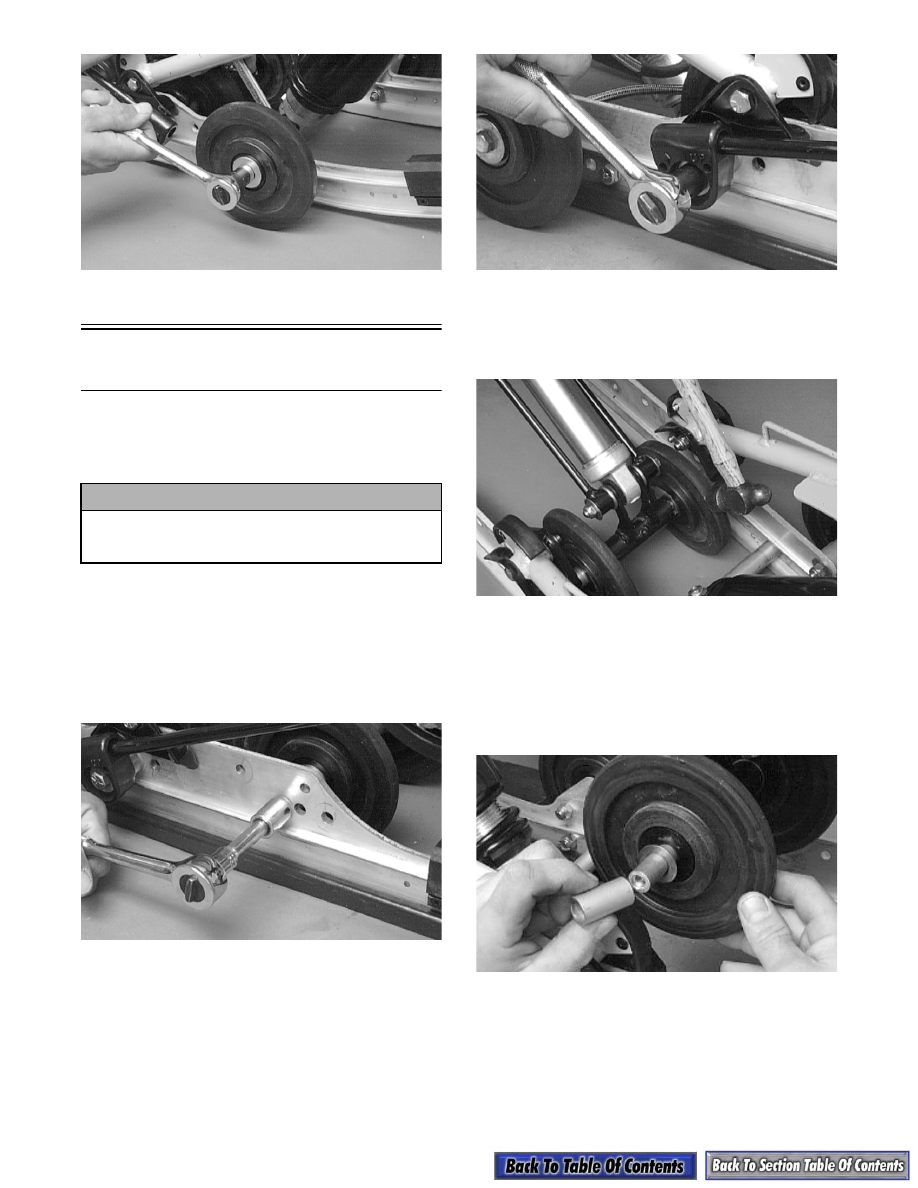Snowmobile Arctic Cat (2002 year). Manual - part 148

9-70
AG512D
Rear Shock Absorber
and Shock Links
NOTE: Before removing the skid frame by using
the Rear Suspension Spring Tool (p/n 0144-311),
remove the spring from the adjusting cam.
NOTE: The skid frame must be removed for this
procedure (see Removing Skid Frame in this sub-
section).
DISASSEMBLING
1. Remove the rear inner idler wheels (see Rear Inner
Idler Wheels in this sub-section).
AG592D
2. Note the hole location that the spring slides are in;
then remove the cap screws and flat washers
securing the spring slides to the rails. Account for
slide blocks.
AG662D
3. Tap the idler wheel assembly rearward until it
clears the mounting brackets; then lift the idler
wheel assembly upward until the shaft clears the
rails.
AG569D
NOTE: Lay components out in order as they are
removed.
4. Remove the spacer, washer, idler wheel with
inserts, washer, and inner bushing. Repeat the
same procedure on the other side of the shock
pivot bracket. Remove the idler wheel axle.
AG492D
! CAUTION
Care must be taken when removing the spring
from the adjusting cam or damage or injury
could result.